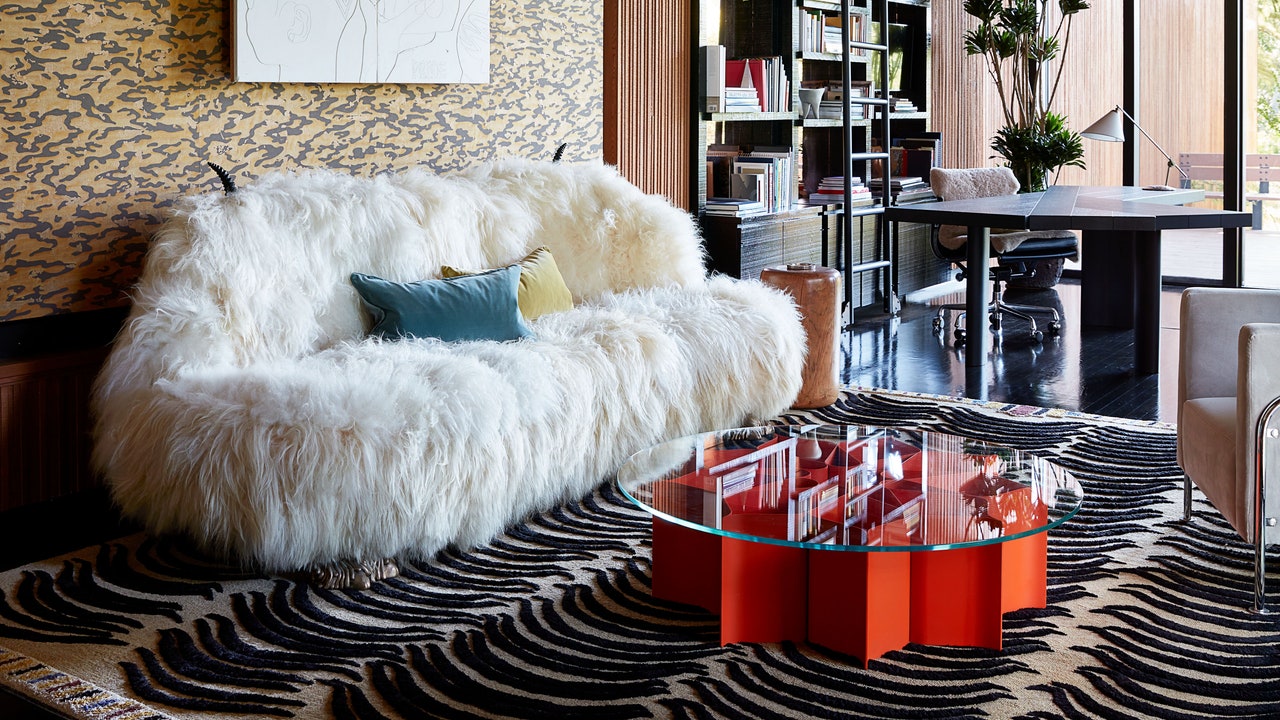Maggie Kidd, cofounder and managing director of Forsyth in St. Louis, acknowledges that the print has a “complex relationship” with fashion and design, noting that “it carries strong connotations, from ruggedness and adventure to a sense of rebellion.” Kidd believes the reclamation of camo is rooted in “blending the outdoors with urban sensibilities.” As she further explains in an email, “The ongoing resurgence of camo print reflects a broader trend of reclaiming utilitarian and historical patterns for contemporary aesthetics. This resurgence is often tied to a blend of nostalgia, practicality, and a desire to subvert traditional uses of the pattern.”
Hedley & Bennett founder Ellen Bennett was hoping to inspire people to embark on their wildest cooking adventures when she introduced a collection of camo aprons, a collaboration with Realtree that has been in progress for the past year and a half. “It weirdly works perfectly for us because people love to come to Hedley & Bennett to get a little bit of their identity out in the world—you can buy a Hedley & Bennett x Grateful Dead apron or a LoveShackFancy x Hedley & Bennett apron,” she explains. “We navigate the world in a really fun way where we can do two polar opposite collabs and it’s okay. So to us, it hit this whole other group of people that are really into fishing and hunting.”
From Bennett’s vantage point, the print made sense because, historically, it has always served an actual purpose and function. Camouflage was originally developed by the French during World War I to conceal soldiers from the enemy—these military “principles of coloration” were eventually adopted by brands like Realtree, Mossy Oak, and ASAT, who offered hunters a more appealing wardrobe to hide from their prey (no ghillie suits, animal skins, mud, or foliage required). As camo continues to evolve, so do the patterns themselves, which leaves room for new interpretations of its significance. While camo is having a moment, Bennett believes that camo is timeless and won’t ever truly phase out.
“Being around for a long time is cool; being cool for a day is not cool,” she says. “Good things don’t go away, they just poke their head up and we remember them, but that’s the sign of something that has true longevity in it. I think that that’s what camo is. It’s never gone away; we just forget about it and then it comes back, and it’s going to keep doing that forever.”

